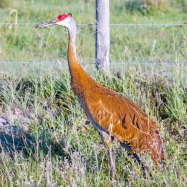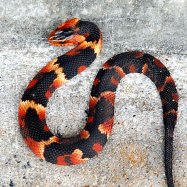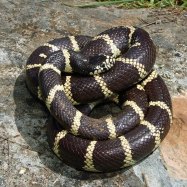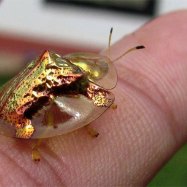
Weimardoodle
50-70 cm
Looking for a loyal and lovable furry companion? Consider the Weimardoodle! This hybrid breed, a mix of a Weimaraner and a Poodle, is perfect for both rural and urban homes. With a medium-sized body and average length of 50-70 cm, they are great for cuddling and outdoor activities. Being a member of the Canidae family, they are intelligent, loyal, and highly trainable. Bring home a Weimadoodle and experience the joys of pet ownership.
Animal Details Summary:
Common Name: Weimardoodle
Kingdom: Animalia
Habitat: Varied
The Enigmatic Weimardoodle: A Fascinating Hybrid of Canine Intelligence and Playfulness
The world of dogs is diverse and ever-evolving, and new breeds are constantly emerging, often surprising us with their unique characteristics and abilities. One such breed that has been making waves in recent years is the Weimardoodle. This charming and intelligent hybrid of the Weimaraner and Poodle breeds has captured the hearts of dog lovers worldwide with its lovable personality, exceptional intelligence, and stunning appearance.The Weimardoodle, also known as the Weimarpoo or Weim-a-poo, is a relatively new breed that first appeared in the late 20th century in the United States Weimardoodle. Like most hybrids, the exact origin of the Weimardoodle is unknown. However, it is believed that breeders wanted to create a dog that possessed the loyalty and hunting abilities of the Weimaraner, combined with the low-shedding and hypoallergenic qualities of the Poodle.
As a crossbreed, the Weimardoodle is not recognized by major kennel clubs, but their popularity has been on the rise, especially among those searching for an affectionate, family-friendly, and trainable companion.
The Genetics of the Weimardoodle: A Hybrid of Two Remarkable Breeds
To understand the Weimardoodle's unique characteristics, it's essential to explore its genetic makeup. The Weimardoodle is a hybrid of the Weimaraner and the Poodle, both distinguished and beloved breeds in their own right.The Weimaraner is a large, athletic, and energetic breed that originated in Germany. These dogs were initially bred for hunting and were popular among aristocrats for their agility, speed, and keen scenting abilities. Weimaraners are known for their striking blue-grey coat and piercing amber eyes, giving them an elegant and distinctive appearance.
On the other hand, the Poodle is a highly intelligent and versatile breed that originated in Germany but became popular in France, where it earned its distinctive, fluffy, curly coat Whiptail Lizard. Poodles come in three sizes - Standard, Miniature, and Toy - and were originally bred as water retrievers, but they have shown exceptional agility, compliance, and intelligence in various dog sports.
The Weimardoodle's hybridization takes the qualities of both breeds, resulting in a dog that is loyal, trainable, and playful yet elegant and striking in appearance.
The Physical Characteristics of the Weimardoodle: A Blend of Two Worlds
The Weimardoodle inherits its coat from both parent breeds, and as such, its appearance can vary greatly. They can have a short, sleek coat like the Weimaraner or a fluffy, curly coat like the Poodle, and their coloration can range from blue-grey to brown, black, or white. Their coat is usually low-shedding and hypoallergenic, making them an excellent choice for allergy sufferers.The Weimardoodle is a medium-sized dog, typically standing between 50-70cm tall and weighing between 25-60 pounds. Their body shape is muscular, athletic and reflects their hunting heritage. They have long legs, a long muzzle, and a deep chest, giving them a lean and graceful appearance. They have a long, wavy tail that they often carry high, and they possess the Poodle's signature pointed, floppy ears.
The Personality and Temperament of the Weimardoodle: A Social and Energetic Canine Friend
One of the most significant advantages of the Weimardoodle's hybridization is its nature. These dogs are known to be friendly, sociable, and eager to please, inheriting the Poodle's intelligence and the Weimaraner's loyalty. They thrive on human companionship and make excellent family pets, getting along well with children and other household pets, provided they are socialized from an early age.Weimardoodles are highly energetic and require daily exercise and mental stimulation to keep them happy and satisfied. They enjoy long walks, runs, and interactive playtime with their owners. They are also highly trainable, so activities like obedience training, agility, and retrieving games will keep them stimulated and engaged.
These dogs have an excellent sense of smell, thanks to their Weimaraner genes, making them suitable for scent work and search and rescue missions. They are also known to have a protective instinct, making them excellent watchdogs. However, this protective nature can sometimes manifest as separation anxiety, so it's essential to provide them with enough mental and physical stimulation to prevent destructive behaviors.
The Weimardoodle's Life Span and Suitable Living Conditions
The Weimardoodle has an average lifespan of 10-12 years, which is typical of medium to large-sized dog breeds. As with all breeds, to ensure a long and healthy life, proper nutrition, regular exercise, and preventive healthcare are crucial.In terms of living conditions, the Weimardoodle is relatively adaptable and can thrive in both rural and urban settings. Their Weimaraner heritage makes them well-suited for a more active lifestyle, and they would be happiest in homes with a yard where they can run and play. However, as long as they get enough exercise and mental stimulation, they can adapt to apartment living.
The Weimardoodle's Habitat and Geographical Distribution
As a relatively new breed, the Weimardoodle does not have a specific habitat. However, given their hunting heritage, they thrive in environments where they can be active, explore, and use their keen senses. They adapt well to varied terrain, including fields, forests, mountains, and even water, thanks to their Poodle genes.The Weimardoodle's popularity has been on the rise worldwide, and they can now be found in many countries. However, they are more prevalent in their country of origin, the United States, where breeders have been actively producing and promoting this exceptional hybrid.
The Caring and Training of the Weimardoodle: Tips for Responsible Pet Ownership
The Weimardoodle is a highly social, energetic, and intelligent breed that requires proper care and training to thrive. Here are some essential tips for responsible pet ownership to keep your Weimardoodle happy and healthy.- Diet and Nutrition: The Weimardoodle requires a high-quality diet that supports its active and energetic nature. Ideally, their food should be high in protein, vitamins, and minerals to keep their coat shiny and their muscles strong. Consult with your veterinarian to determine the best diet for your Weimardoodle based on their age, size, and health condition.
- Exercise Requirements: Daily exercise is essential for the Weimardoodle. Without regular activity, they can become bored and develop destructive behaviors. Plan for at least an hour of exercise and playtime every day, consisting of walks, runs, and interactive play sessions.
- Grooming: The Weimardoodle's coat requires regular grooming to keep it healthy and free from tangles and matting. Brush your Weimardoodle at least twice a week to remove loose hair, and bathe them once a month or as needed. Additionally, trim their nails regularly, clean their ears, and brush their teeth to prevent dental problems.
- Training and Socialization: The Weimardoodle is highly intelligent and eager to please, making them relatively easy to train. Start training and socialization from a young age to prevent unwanted behaviors. Positive reinforcement, consistency, and patience are crucial for successful training.
Conclusion
The Weimardoodle is a unique and fascinating hybrid of two outstanding breeds, the Weimaraner and Poodle. This medium-sized, energetic, and social dog has captured the hearts of dog lovers worldwide with its lovable nature, exceptional intelligence, and striking appearance. As with any breed, it's crucial to provide them with proper care, training, and socialization to ensure they grow into happy and well-rounded companions. If you're looking for a loyal, energetic, and intelligent canine friend, the Weimardoodle may just be the perfect companion for you.

Weimardoodle
Animal Details Weimardoodle - Scientific Name: Canis lupus familiaris
- Category: Animals W
- Scientific Name: Canis lupus familiaris
- Common Name: Weimardoodle
- Kingdom: Animalia
- Phylum: Chordata
- Class: Mammalia
- Order: Carnivora
- Family: Canidae
- Habitat: Varied
- Feeding Method: Omnivorous
- Geographical Distribution: Worldwide
- Country of Origin: United States
- Location: Both rural and urban areas
- Animal Coloration: Varies
- Body Shape: Medium-sized
- Length: 50-70 cm

Weimardoodle
- Adult Size: Medium
- Average Lifespan: 10-13 years
- Reproduction: Sexual
- Reproductive Behavior: Breeding season
- Sound or Call: Varies
- Migration Pattern: Non-migratory
- Social Groups: Pack
- Behavior: Intelligent, loyal, and friendly
- Threats: None
- Conservation Status: Not evaluated
- Impact on Ecosystem: Minimal
- Human Use: Companion
- Distinctive Features: Shaggy coat, floppy ears
- Interesting Facts: Weimardoodles are a crossbreed between a Weimaraner and a Poodle.
- Predator: None

Canis lupus familiaris
The Fascinating Weimardoodle: A Unique Crossbreed with Endearing Qualities
When it comes to beloved canine companions, one breed that often comes to mind is the Weimaraner. Known for their striking grey coats and piercing blue eyes, Weimaraners have been a popular breed for decades. But what happens when they are crossed with another beloved breed, the Poodle? The result is a unique and charming crossbreed known as the Weimardoodle.A Weimardoodle, also sometimes referred to as a Weimapoo or a Weimaroodle, is a cross between a Weimaraner and a Poodle PeaceOfAnimals.Com. This crossbreed usually inherits the shaggy coat and floppy ears of the Poodle and the athleticism and intelligence of the Weimaraner. While they may not be as well known as some other designer breeds, the Weimardoodle is gaining popularity among dog lovers for their endearing qualities.
Physical Characteristics of the Weimardoodle
A full-grown Weimardoodle is classified as a medium-sized dog, typically weighing between 50 to 70 pounds and standing around 18 to 22 inches tall at the shoulder. This makes them a great size for families, not too big to be overwhelming, but not too small to be fragile.Their coat can vary from wavy to curly, depending on which type of Poodle they are crossed with. The most common colors seen in Weimardoodles are shades of grey, black, and brown. The shaggy fur, which can sometimes be hypoallergenic, is low-maintenance and does not require frequent brushing or grooming.
One of the most distinctive features of the Weimardoodle is their floppy ears, which give them an endearing and friendly look. Their legs are long and lean, making them agile and excellent runners White Ferret Albino Ferrets. With a strong and athletic build, this crossbreed is an excellent companion for outdoor activities.
Temperament and Personality
Weimardoodles are known for their intelligence, loyalty, and friendly demeanor. They are highly trainable and make great family pets, as well as service or therapy dogs. With their Poodle ancestry, they are known to be hypoallergenic, making them a suitable choice for families with allergies.They have a playful and energetic nature, making them great playmates for children. However, they do require daily exercise and mental stimulation to keep them happy and healthy. They can become destructive and develop behavioral problems if left alone for long periods without proper exercise and stimulation.
Reproduction and Breeding Behavior
As with most dog breeds, Weimardoodles reproduce sexually. However, one interesting fact about their breeding behavior is that they tend to have a specific breeding season. During this time, female Weimardoodles will be more receptive to mating, and male Weimardoodles may become more territorial. It is essential to monitor and separate them if necessary during this time to avoid any potential conflicts.Social Behavior and Social Groups
Weimardoodles are social dogs and thrive in the company of their humans and other pets. They are pack animals and do well when they have other canine companions. A Weimardoodle's intelligence and loyalty make them well suited to be a member of any social group.Threats and Conservation Status
Surprisingly, there are no known threats to the Weimardoodle as a breed. They are relatively healthy dogs, with an average lifespan of 10 to 13 years. However, they may be susceptible to some health issues common in their parent breeds, such as hip dysplasia and eye problems.Since Weimardoodles are a hybrid breed, they are not recognized by the American Kennel Club (AKC). Therefore, they do not have an official conservation status. However, many reputable breeders are committed to producing healthy and well-tempered Weimardoodles, ensuring their future as a beloved crossbreed.
Impact on the Ecosystem
As a domesticated breed, the Weimardoodle has minimal impact on the ecosystem. They do not have any specific hunting instincts or prey, making them an excellent choice for families with other pets. However, it is essential to keep an eye on their hunting tendencies, which can sometimes stem from their Weimaraner lineage.Human Use and Interesting Facts
Weimardoodles have been bred for being excellent companion dogs. Their intelligence and trainability make them the perfect choice for various human uses, including service dogs, therapy dogs, and even search-and-rescue dogs. They are also widely used as pets for families, thanks to their loyal and friendly nature.Other than their delightful personality, there are many interesting facts about the Weimardoodle. As mentioned earlier, they are a cross between a Weimaraner and a Poodle, which creates a unique blend of characteristics. This crossbreed was created in the 1980s, making them a relatively new and less well-known breed.
Predators
One unique advantage of the Weimardoodle is that they do not have any natural predators. Due to their domestication and friendly nature, they do not pose any threat to other animals or humans, making them an ideal choice for families with small children.The Weimardoodle: A Unique and Beloved Breed
In conclusion, the Weimardoodle is a crossbreed that possesses a perfect blend of qualities from their parent breeds, making them a desirable choice for many dog owners. With their shaggy coats, floppy ears, and friendly personalities, they have captured the hearts of dog lovers all around the world.They are intelligent, trainable, and versatile, being used for various human purposes, including being beloved companions. With minimal impact on the ecosystem and no known threats, the future looks bright for this unique and endearing crossbreed. Whether you're looking for a loyal and friendly family dog or a skilled service dog, the Weimardoodle is a breed worth considering.

The Enigmatic Weimardoodle: A Fascinating Hybrid of Canine Intelligence and Playfulness
Disclaimer: The content provided is for informational purposes only. We cannot guarantee the accuracy of the information on this page 100%. All information provided here may change without prior notice.












